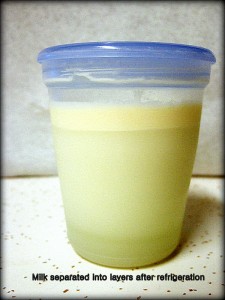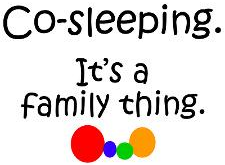 The AAP (American Academy of Pediatrics) recommends that for optimal nutrition, babies be exclusively breastfed for at least the first six months. This means no supplemental water, formula, or solid foods. Always check with the baby’s mother before offering ANY food other than her breast milk.
The AAP (American Academy of Pediatrics) recommends that for optimal nutrition, babies be exclusively breastfed for at least the first six months. This means no supplemental water, formula, or solid foods. Always check with the baby’s mother before offering ANY food other than her breast milk.
Here’s some information that caregivers need to know in order to support nursing mothers and babies.
- Human milk does not look like formula or cow’s milk. It may be a different color or consistency, and it is normal for it to be bluish, greenish, or even brownish in color.
- Frozen milk, or milk expressed during the early days of nursing (which still contains colostrum) may look yellowish.
- Because human milk is not homogenized, it will naturally separate into layers of milk and cream. This is normal, and does not mean the milk is spoiled. If the milk separates, heat and swirl it gently to mix.
- Several batches of EBM (expressed breast milk) pumped at different times may be mixed and/or stored together to make enough for one feeding. A mother’s EBM should only be used for her baby. Milk from different mothers should not be pooled.

- Because a baby digests and uses human milk so completely, a little less breast milk than formula may be needed at a feeding. There is no way to predict exactly how much milk a baby will need at each feeding, but you will soon learn how much milk they usually take. In exclusively breastfed babies, milk intake increases quickly during the first few weeks of life, then stays about the same between one and six months – though it is likely to periodically increase during growth spurts. During the first six months, most babies will take in about the same amount of milk: around 25-32 ounces in 24 hours. It’s a good idea to have some 1-2 ounce portions available for snack feedings.
- At some point after 6 months, depending in how much of his nourishment comes from solid foods and how often he nurses, the baby’s milk intake will gradually decline as his nutrient intake from other sources increases. The ‘average baby’ will ‘usually’ take between 2-4 ounces, but this varies greatly from baby to baby. Remember, these are only guidelines and don’t apply to each unique little person.
- As a rule of thumb, babies need about one ounce of milk for every hour away from mom, divided into bottles based on how often they would typically feed at the breast.
- Babies under 3 months will usually take between 2-4 ounces, and babies over 3 months will take from 4-6 ounces.
- Until you get a feel for how much the baby will consistently take at each feeding, offer small amounts of EBM at a time. If the baby is not very hungry, you won’t have to waste large quantities of milk. If he needs more, prepare another smaller amount.
- You should be aware that a breastfed baby may not be on the same feeding schedule as a formula fed baby. Breast milk is digested quickly, and the baby may need to feed more frequently. Also, many nursing babies are used to nursing for comfort as well as nutrition, and may need extra cuddling and rocking, especially at nap time. Be flexible, and as you spend time with the baby you will get to know his own unique schedule, and you will be able to comfort him in your own way.
- Breastfed baby’s bowel movements are looser than formula fed infants, and may be more frequent (especially in the early weeks). It is not unusual for a newborn nursing baby to have a loose stool every time he feeds, but this is not diarrhea (unless accompanied by fever, lethargy, vomiting, or other symptoms of illness). In breastfed babies older than 6 weeks, it is not unusual for babies to go several days without stooling. In a totally breastfed infant, this is not considered constipation. Constipation consists of hard, dry stools that are painful to pass. An older nursing baby may not stool every day, but the stool will be loose and plentiful when he does pass it. Totally breastfed baby’s stools are usually mustard yellow and seedy, but may also be yellow, green or brownish. They are much milder smelling than a formula fed baby’s stools.
Thawing and Heating
- To thaw frozen EBM, it is best to leave it in the refrigerator for about 12 hours. If you need to thaw it quickly, hold the container of milk under cool running water, and gradually add warmer water until the milk is thawed and heated to room temperature, gently swirling to mix in the fat.
- To heat refrigerated EBM, put the container of milk in a pan of warm (not hot) water just until the chill is off. Many babies don’t mind if the milk is cold, and serving it right out of the refrigerator is not harmful. Run the nipple under warm water, though, as most babies don’t like the feel of a cold nipple.
- NEVER thaw or heat EBM in a microwave. This can destroy valuable nutrients, and can also create dangerous ‘hot spots’ that can burn the baby’s mouth, even though the bottle may feel cool to the touch. For the same reasons, do not boil or overheat EBM.
- Use thawed EBM within 24 hours.
- Never re-freeze thawed breast milk.
- Fresh EBM that has been heated and offered to baby can be put back in the fridge right after the feeding and kept for 2 hours, then discarded.
- Frozen EBM that has been thawed, warmed, and offered to baby should be discarded after the feeding if he doesn’t finish the bottle.
- Human milk that is properly stored is not spoiled, unless it smells sour or tastes bad.
Encouraging Baby to Feed
Many breastfed babies are reluctant to take a bottle at first. A hard rubber nipple feels and tastes very different from soft skin. Babies may refuse to take a bottle from their mother since they associate her with nursing, but will take it more readily from a caregiver, especially if the mother is not in the room. Most babies adjust more easily if they get to know their caregiver gradually, so it may be helpful to try a program of visits and short stays (that include a feeding time) before baby is left for longer periods.
Paced Feeding
Paced feeding (sometimes called “baby-led”, or “breastfeeding supportive” feeding is recommended for nursing babies who take bottles. Because breastfeeding is the natural and biologically normal way of feeding human babies, it makes sense that we would try to make the bottle feeding experience as much like breastfeeding as possible.
With paced feeding, the caregiver is attentive and responsive to the baby’s cues and allows him to initiate the feeding rather than following a set feeding schedule.
Tips for paced feeding include:
- Hold baby in an upright position
- Tickle his lips with the bottle nipple until he draws it into his mouth
- Hold the bottle horizontally, which will slow the flow of milk and make him work a little harder for it, instead of allowing the milk to passively pour into his mouth.
- Pause frequently during the feeding, just a babies do while mom’s milk lets down multiple times
- Switch sides halfway through the feeding, which helps baby avoid developing a side preference and encourages eye contact
- Let the baby determine when he feels full. Don’t try to force him to finish every drop. If he falls asleep, don’t try to wake him up. it means he’s done with the feeding.
- Don’t mix formula and breast milk in the same bottle. Formula has to be discarded at the end of the feeding, so feed the breast milk first and then follow with formula because you don’t want to waste a drop of mom’s ‘liquid gold’.
When the caregiver is the one deciding how much milk to offer, the baby might not get the amount they need (not more, not less). Caregivers will quickly have an idea of how much milk to offer at each feeding. Whoever is bottle feeding the baby should try to make whatever amount offered last the average length of the feeding (usually around 10 – 20 minutes). A baby whose mom is at work for 8 hours will need around 8 ounces while she’s gone. Newborns and babies less than two months old will usually take around 2 ounces at a time. Between 3-6 months, they will usually take 2-4 ounces per feeding. Older babies may take 4-5 ounces at a time, but usually not a lot more than that, especially once they start solids. Because it’s not an exact science, It’s always good to have some extra milk around just in case he needs more.
Paced feedings take a little longer (usually about 10-20 minutes rather than 5-10) than just sticking a bottle in baby’s mouth and encouraging him to empty it as quickly as possible, but it’s worth the extra time. Pace feeding supports the nursing relationship and makes it easier to switch back and forth between bottle and breast. By allowing the baby to be in control of the feeding, it addresses some of the drawbacks of feeding from a bottle.
Tips to get the baby to take a bottle include:
- Offer the bottle before the baby gets frantically hungry.
- Offer the bottle in a position other than the traditional cradle hold – many babies associate this position with nursing. It sometimes works well to sit the baby in an infant seat or prop him on your knees while initially offering the bottle.
- Wrap the baby in a piece of the mother’s clothes while offering the bottle.
- Run warm water over the nipple before offering it.
- Try different types of nipples to find a shape and flow rate that the baby will accept.
- Try moving rhythmically – rocking, walking, or swaying from side to side while offering the bottle.
If the baby will absolutely not take the bottle, he can be fed EBM by other methods, such as cup, spoon, syringe, or dropper. With a little time and patience, he will usually learn to accept the bottle.
When the Mother Will Be Returning Soon
If the baby becomes unsettled, try rocking and talking to him rather than feeding him. Offer a pacifier if he is used to using it, and the mother approves. When the mother returns, she will probably want to feed him as soon as possible for practical reasons – her own comfort, closeness with her baby, and to stimulate her milk supply. If you can’t get him settled, offer a small amount of EBM. If no milk is available, offer a small amount of boiled water (no more than 2 ounces in babies under 6 months old). The mother should be consulted before any other liquids are offered to her baby. If the baby is old enough to eat solid foods, you may be able to offer something that has been tolerated previously. Always check this with the mother first.
Your Relationship With the Baby’s Mother
You can be an enormous help to the baby’s mother in supporting her efforts to provide breast milk for her baby. Mothers choose to provide EBM for their infants when they have to be separated from them because they want the very best for their babies. Making the decision to leave breast milk rather than formula, and to continue the nursing relationship even after returning to work or school requires a great deal of commitment on the mother’s part. Your encouragement and support can make all the difference, especially if the mother arranges to come to your home or day care center to feed her baby.
There are times when a baby may go through periods of appetite increase. These “growth spurts” often occur at about 3 weeks, 6 weeks, 3 months, and 6 months. If you let the mother know, she will then try to express more milk. Sometimes it takes a few days for her supply to catch up. If the mother knows you support her efforts to provide breast milk for her baby, you will be contributing in a very positive way to helping her continue to nurse. Remember: Breast milk is the perfect food for babies!
Anne Smith, IBCLC
Breastfeeding Basics
 Breastfeeding Basics
Breastfeeding Basics



